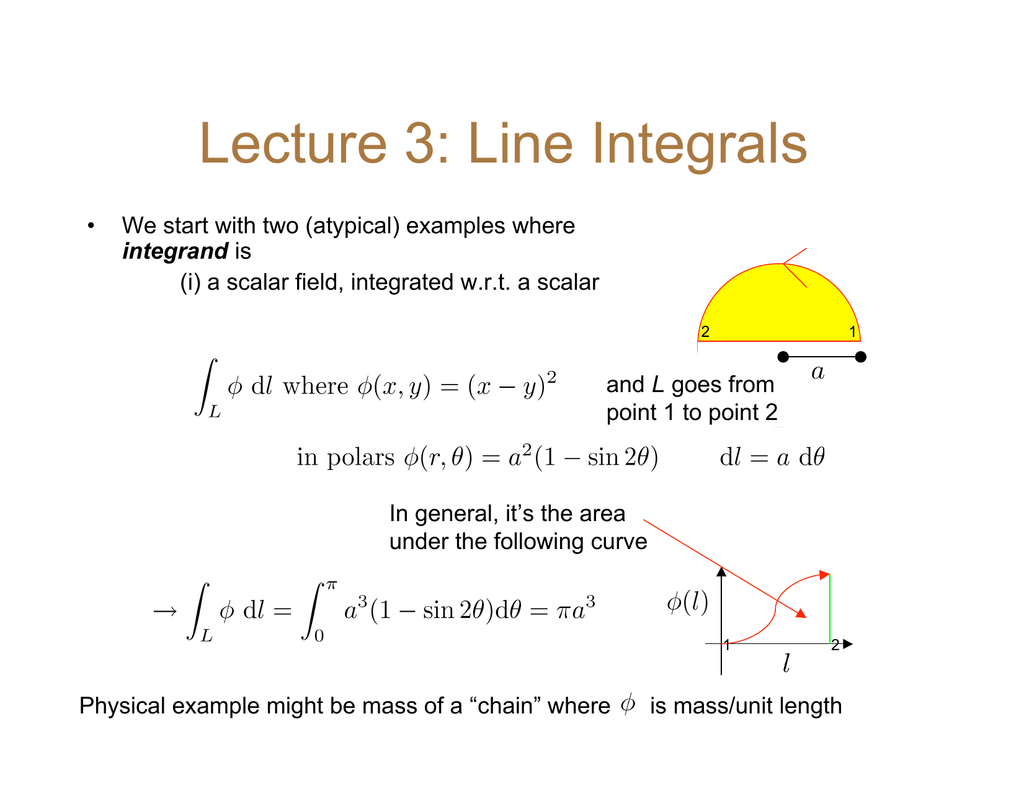


The line integral of a force over a path is equal to the work done by that force on the path. Calculating the voltage difference near a point charge is a good example. Such an integral is also used for the calculation of voltage difference since voltage is work per unit charge. The line integral of electric field around a closed loop is equal to the voltage generated in that loop ( Faraday's law): When such a product is summed over a path length where the magnitudes and directions change, that sum becomes an integral called a line integral.Ī line integral is also used for the general definition of work in mechanics. Vector functions such as electric field and magnetic field occur in physical applications, and scalar products of these vector functions with another vector such as distance or path length appear with regularity. HyperPhysics***** HyperMath***** Calculus It is appropriate for such physical applications as Gauss' law. The outward directed surface integral over an entire closed surface is denoted The direction of the area element is defined to be perpendicular to the area at that point on the surface. Change the limits of the integral such that they are calculated from A-B and independently from B-A and you will find the scalar values will be positive - over a closed integral they are not independent in this way.An area integral of a vector function E can be defined as the integral on a surface of the scalar product of E with area element dA. Therefore, positionally speaking the work done to move the particle from point A to point B is positive whereas the work done to return the particle from point B to point A from the original frame of reference must be negative in order to satisfy the conservative result as stated above - this is directly a consequence of the vectorial nature of the force and incremental distance over which the integral is calculated. If we now return the particle to its initial position, because the electric-force on the particle is conservative, the work done is 0. A point to note is that there is a distinct non-zero value for the work done which correlates directly to positional movement from point A to point B. If we move a particle from point A to point B irrespective of which route or the time it takes to get there, the work done to move the particle to that point is the same - this is a fundamental feature of conservative forces. Lets bring this closer to home with a more familiar force the electric-force, that acts on electrically charged particles. Remember this question is about work done being classified as either positive or negative relative to some frame of reference. v the initial velocity of an object measured using m/s. vf the final velocity of an object measured using m/s. W the work done by an object measured using Joules. But gravity is a conservative force and therefore will behave in accordance with the integral equation as stated above. Work done by an object can be scientifically expressed as: W 1 2 mvf2 - 1 2 mu2 Where, m the mass of the object measured using kilograms.

I don't disagree with what you are saying. When the hammer is released this potential energy is converted to an exactly equal amout of kinetic energy. This energy is stored in the hammer as potential energy. this could be from chemical or electrical energy. However taking gravity away from the hammer would prevent the system working.įirstly the rest of the universe does work on the hammer. If you take gravity away it would not affect the rest of the universe this is the acid test. The winch and pile form the rest of the universe.
LINE INTEGRAL WORKDONE PLUS
Now in my piledriver example the drophammer plus gravity form the system. Work is done by the rest of the universe on the system No system can do work on itself.This is just a staement of conservation of energy. The trick is knowing where to draw the dividing line. You separate things into the system of interest and the rest of the universe. To obtain useful information about work done you have to split a closed loop and here lies the trick that often trips people up. Work is also about purely mechanical energy, there are other forms and energy conservation is about the idea that energy can neither be created nor destroyed, merely changed from one form to another. So I have tried to avoid more advanced mathematics such as line integrals, taken over a closed loop or not. Work is a mechanical concept and I would guess that uzair is studying at about GCSE level.


 0 kommentar(er)
0 kommentar(er)
